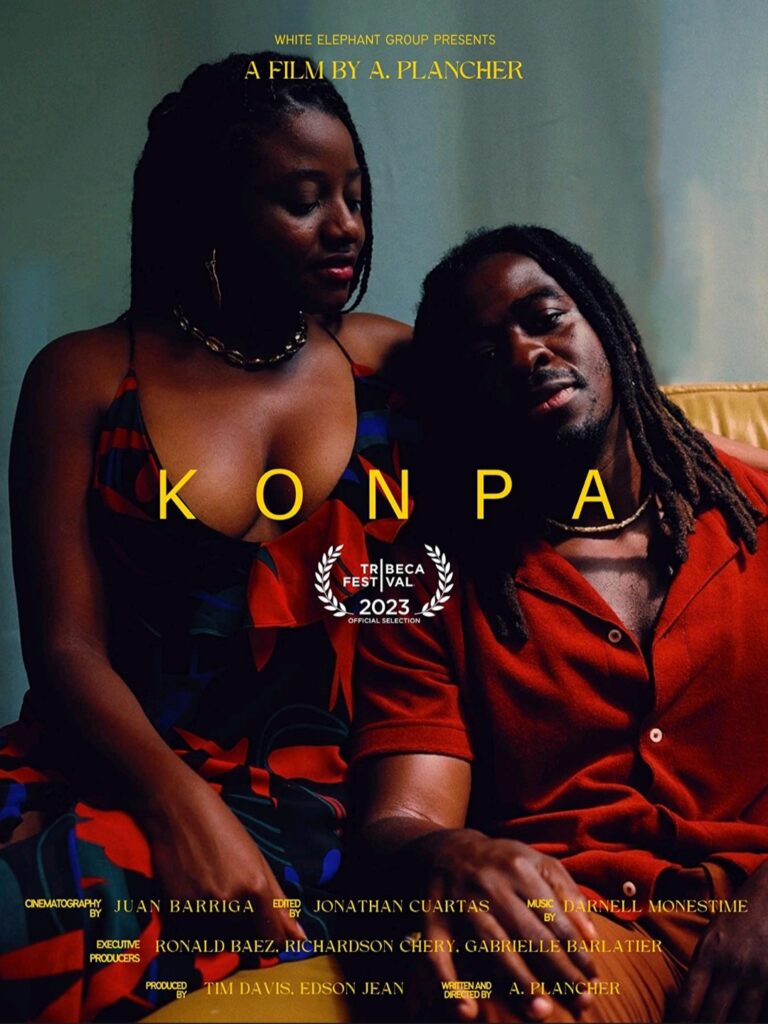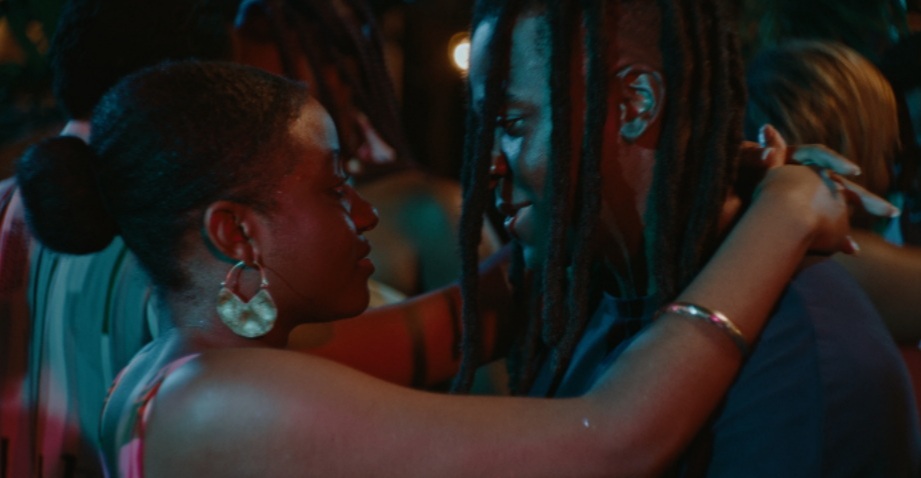Konpa is a beautiful but brief Haitian-American dance detour, directed by Al’Ikens Plancher, which will have its World Premiere at Tribeca Festival 2023. The film is awash in color and mood, as well as exhibiting a well-placed trust in the patient development of emotional moments. Language, and the role of the body in communication, are vitally important in Konpa, and the film does an effective job of looking holistically at interaction, movement and speech. It is a strong addition to a growing catalog of films that focus on the diverse roots of American life.
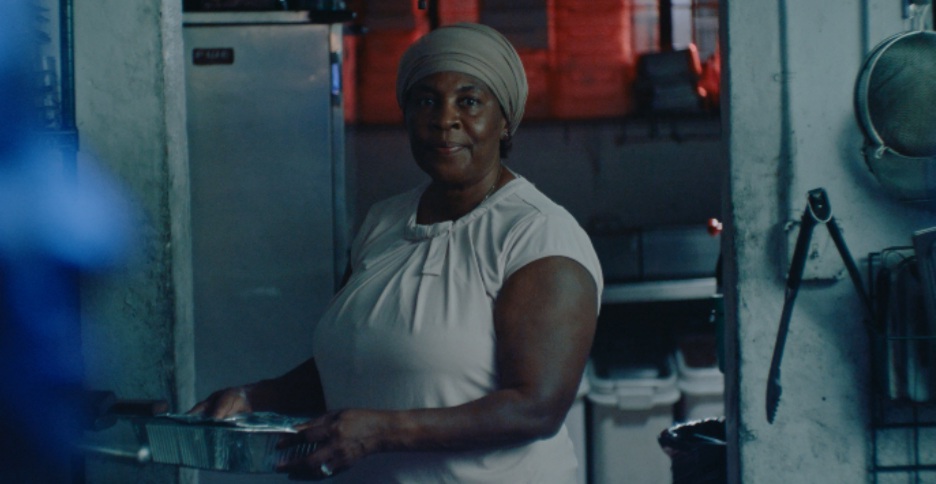
In the opening shot, Jean (Edson Jean), a somewhat timid young man, cycles towards the camera: electronic music blaring through his ear pods. As the focus pulls onto him, he stops outside a small family-owned restaurant, hoping to pick up some food. He tries to order something, but the owner is unimpressed. She doesn’t understand him as he can’t speak Creole. She calls her daughter, Minouche (Nagela Lukacs), who can speak English. Minouche questions Jean about how he knows Creole but doesn’t speak it, something he calls receptive multilingualism: this is where you understand some of the language but don’t speak it. He asks if she will take his order, she says maybe but turns around and walks off. Desperate for some food, he follows her round the back of the building, through a set of red curtains, and into an unexpected explosion of Haitian music, dancing, and color.
Above all else, Konpa is about finding a true connection with family heritage. We follow Jean as he is led into a deeper understanding of his culture, encouraged not just to understand it but to speak it, live it, dance it. The film sees culture (and language) not just as something intellectual or cerebral, to merely think about or explain, but as something you feel through your body—something that bursts out in the way that you move and groove. Konpa, after which the film is named, is a Haitian dance where partners are often held tightly and romantically, with most of the movement coming from the hips. Minouche is adamant that Jean is getting in the way of his own peace and participation, that he is choosing not to speak Creole. He appears as a man who’s arrived at a crossroads, who’s been dragged into existential contemplation by certain circumstances—something that will become apparent at the conclusion of the film.
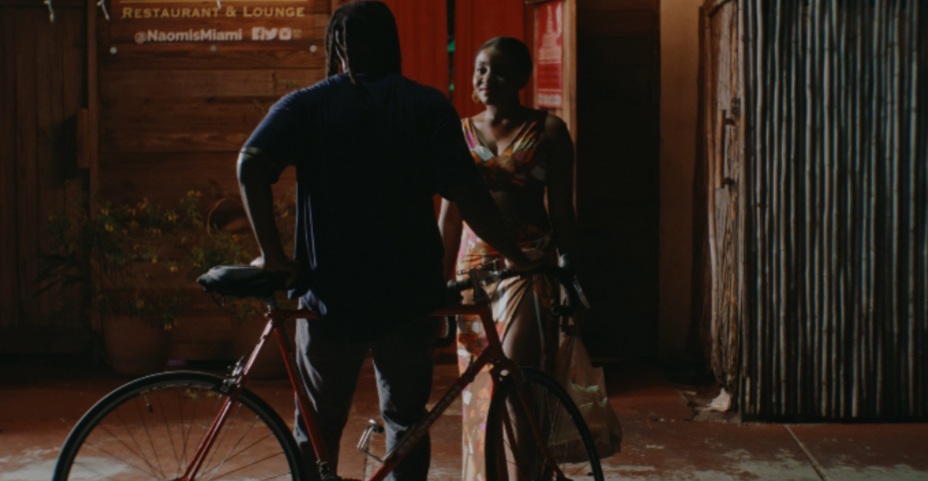
The film, shot by cinematographer Juan Camilo Barriga, is bathed in moonlight and color: greens, blues, pinks and yellows. It is sensual and yet calming, as the glow of the dancefloor rests on each person’s face and shoulders. There is a frequent use of lens flares, with light splitting and spreading out in front of your eyes. The relaxed mood and chilled temperature are crucial to the success of the film, and the visuals don’t overstretch the cautiously wading protagonist. On occasion, however, the film can feel a little bit sanitized. The dance sequences feel a bit too choreographed, lacking the genuine immersion and unpredictability of a film like Steve McQueen’s Lovers Rock (though using different tempos of music). Slow motion is also used to mirror the rhythmic, almost methodical, nature of the dancing which, when combined with the music, creates moments of impressive tranquility. The effect is perhaps a little overused, contributing to a lack of kineticism, but not fatally so.
The central relationship between Jean and Minouche, and the central tension between heritage and assimilation, lacks some development. In particular, Minouche’s character only really exists to facilitate and lead Jean’s own discovery—which inhibits the authenticity of the romantic dimension of the film. Even then, we are also given very little information about Jean’s background and why he hasn’t learnt to speak Creole up until the point at which he met Minouche. It would have been helpful if there was some more initial exposition, introducing Jean’s situation, which could have both emphasized the underlying tensions at the heart of the film while retaining its ultimate ambiguity. Jean, as a result of too little information and an underplayed performance from Edson Jean, remains at too far a distance until the very last moments.
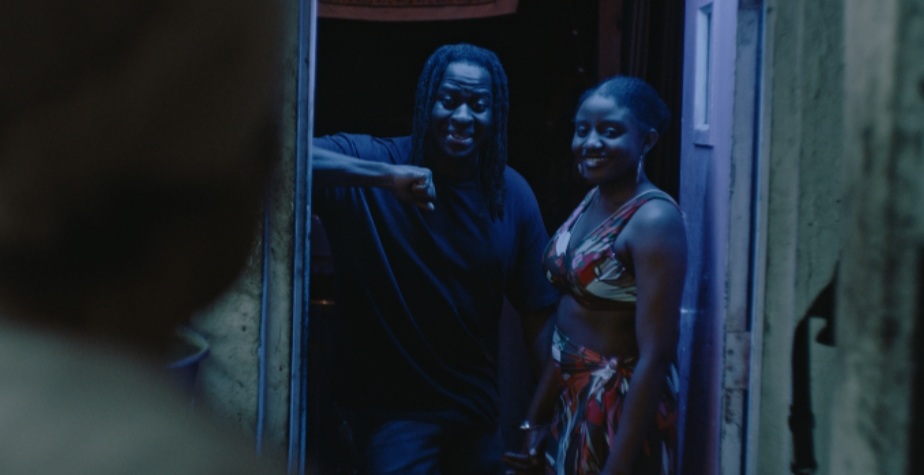
This being said, Konpa is an effortless escapade into Haitian dance and delight. The film, using a largely inconspicuous situation, is able to unveil and access some of the beauty of Haitian culture and present it in a visually interesting way. The writing has its flaws, as the story and characters slightly underwhelm and remain frustratingly obscure, but in its entirety Konpa is a thoroughly impressive attempt at communicating how culture is more than just a word, a signifier or even a language; it is a dance, a movement, a close embrace.
